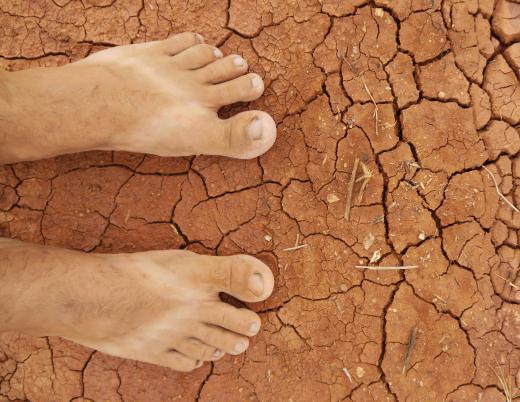What Are Abiotic Factors?
Abiotic factors are elements of a living ecosystem that affect the viability of the system to grow or survive, but which themselves are not biological in nature. These environmental factors include common conditions such as temperature, air flow, available light, and the inorganic components of soil. More broad-based abiotic factors that can influence organisms also include the elevation of terrain, variations in climate, and the level of rainfall that a region receives over the course of growing seasons.
Nonliving factors shape environments and the mixture of organisms that live within them to as great of a degree as biological factors such as predator-prey relationships themselves do. A climate with long harsh winters, for instance, like a region of tundra, will limit the growth of most plants except for mosses and heaths that are hardy in cold environments where the ground is frozen for much of the year. Animal species are also limited in such an environment to those that can grow thick insulating coats and live in conditions of low direct light or where food sources are scarce, such as polar bears, arctic hares, or reindeer.

Chemical factors in the soil, atmosphere, and water supply of ecosystems are often determined by abiotic factors that take place over geological time scales. These can include elements that influence land composition like volcanic activity, and wind and water currents that are channeled by lunar tidal cycles. Temperature ranges within a climate are also influenced by the elevation of the land, as well as how the terrain influences rainfall patterns and air pressure systems that flow over it.

The effects of living organisms on an environment are often intertwined with abiotic factors to such a degree that, when one is drastically changed, so is the other. Human activity in an environment can also alter natural abiotic factors like rainfall patterns which, over time, can change the local ecosystem and the organisms capable of surviving there. The best example of this in history is the process of deforestation.
Extensive tropical or temperate forests, such as once existed in the Fertile Crescent along a large eastern shore region bordering on the Mediterranean sea, maintained rainfall patterns that kept the ecosystem lush and ecologically diverse for many of Earth's earliest civilizations. Intense deforestation of the Fertile Crescent region by various societies from the Sumerians in 2,000 BC up to the time of the Roman Empire reduced forest cover to 10% of former levels, resulting in salinization of the water and soil, and greatly-reduced yearly rainfall that changed the climate to a hot, desert region where few plants or animals could thrive.
A similar pattern is taking place in contemporary times with the rapid deforestation of the Amazon river basin in South America. It is estimated that 20% of the Amazon rainforest has already been cut down as of 2011, and another 20% will vanish within the next two decades. At this point, environmental scientists believe that the forest will reach a tipping point, where abiotic factors will begin to unravel its natural ecosystems. This is in part due to the fact that the forest produces half of its own rainfall by the moisture it releases back into the air, and this drying out of the region will lead to an increase in other abiotic factors, such as spreading wildfires, droughts, and the release of greenhouse gasses as the forest dies back that contribute to global warming and perpetuate abiotic influences further.
AS FEATURED ON:
AS FEATURED ON:












Discuss this Article
Post your comments